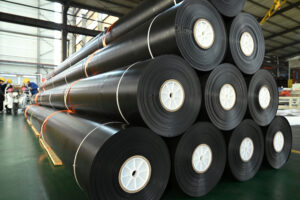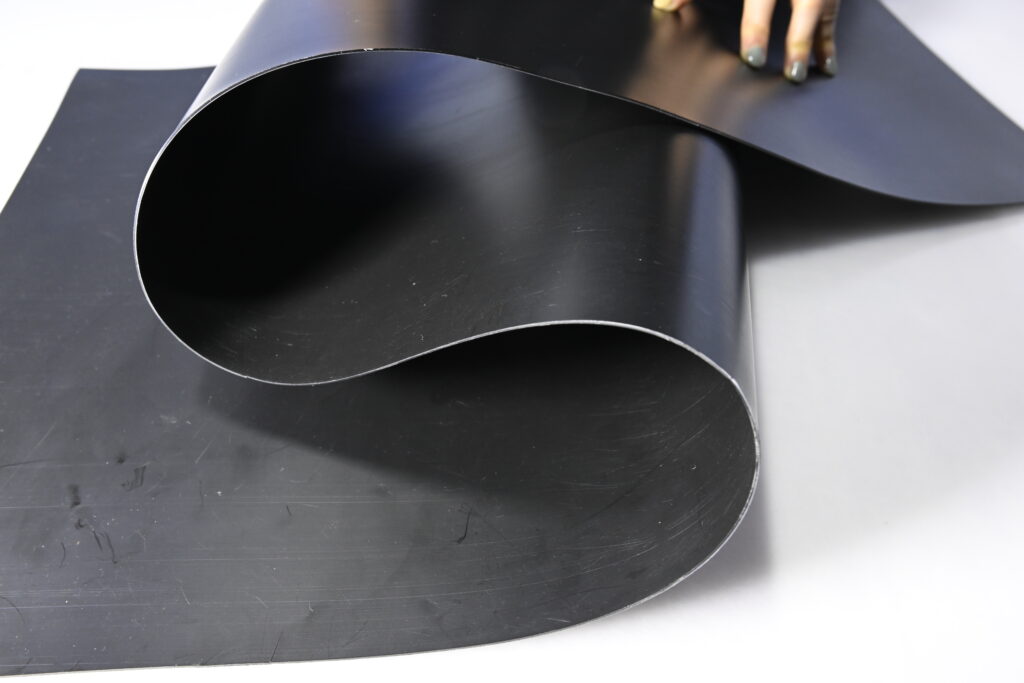Definition of Geomembrane
Geomembrane is an artificial film material used for isolation, anti-seepage, anti-corrosion, reinforcement, etc. between soil and water. It is usually made of high molecular polymers, such as polyethylene (HDPE), polypropylene (PP) and so on. One of the main functions of a geomembrane is to prevent liquids or gases from penetrating into or leaking out of the soil through its surface. This anti-seepage effect is very important in fields such as hydraulic engineering, environmental engineering, and agricultural engineering.
Geomembranes can also enhance the tensile strength and stability of the soil, and play a role in reinforcing and strengthening the soil in earthworks. It is usually used in roadbeds, soil slopes, embankments and other occasions. According to different functions and structures, geomembranes can be divided into anti-seepage geomembranes, reinforced geomembranes and protective geomembranes. Each type of geomembrane has different characteristics and scope of application.
Geomembrane production equipment
1. Film making machine: The film making machine is the core equipment in the production of geomembrane, which is used to melt, extrude and calender raw materials to form the base material of geomembrane. According to different production requirements, the film making machine can adopt single-layer or multi-layer extrusion structure.
2. Extruder: The extruder is the key part of the film making machine, which is used to extrude the film-like substrate through the extrusion port after heating and melting the raw materials (such as polyethylene, polypropylene, etc.).
3. Calender: The calender is the equipment used in the film making machine to stretch and cool the extruded film. It usually consists of a pair of rollers. By controlling the speed and temperature of the rollers, the geomembrane can reach the desired thickness and size.
4. Cooling system: During the production process of geomembrane, a cooling system is needed to reduce the temperature of the film to make it solidify and stabilize quickly.
5. Cutting machine: The cutting machine is used to cut and size the geomembrane according to the requirements, so as to meet the needs of different occasions.
6. Auxiliary equipment: including raw material conveying system, heating system, pressure control system, electrical control system, etc., used to assist various operations and controls in the production process of geomembrane.

Matters needing attention in the production process of geomembrane
1. Selection of raw materials: It is very important to select high-quality raw materials. The main raw materials used are usually polyethylene (HDPE), polypropylene (PP), etc., and high-quality materials that meet relevant standards and specifications should be selected.
2. Production environment control: The production of geomembrane needs to be carried out under suitable environmental conditions, including the control of temperature, humidity and dust. A clean and dust-free environment is an important factor to ensure product quality.
3. Equipment maintenance and cleaning: Regularly check and maintain the normal operation of production equipment to ensure that the equipment is free from failure and damage. At the same time, keep the equipment clean and hygienic to prevent impurities and pollutants from entering the production process.
4. Process control and quality inspection: establish a scientific production process and take effective quality control measures. Monitor and test the key links and indicators in the production process to ensure the stability and consistency of product quality.
5. Product storage and transportation: After the production is completed, the geomembrane products should be properly stored and packaged to avoid moisture, damage and pollution. During transportation, pay attention to protective measures to ensure that the product is not damaged and deformed.
Compliance with relevant standards and norms: Geomembrane production needs to comply with relevant national and regional standards and norms, including product quality, environmental protection, safety production and other requirements.


